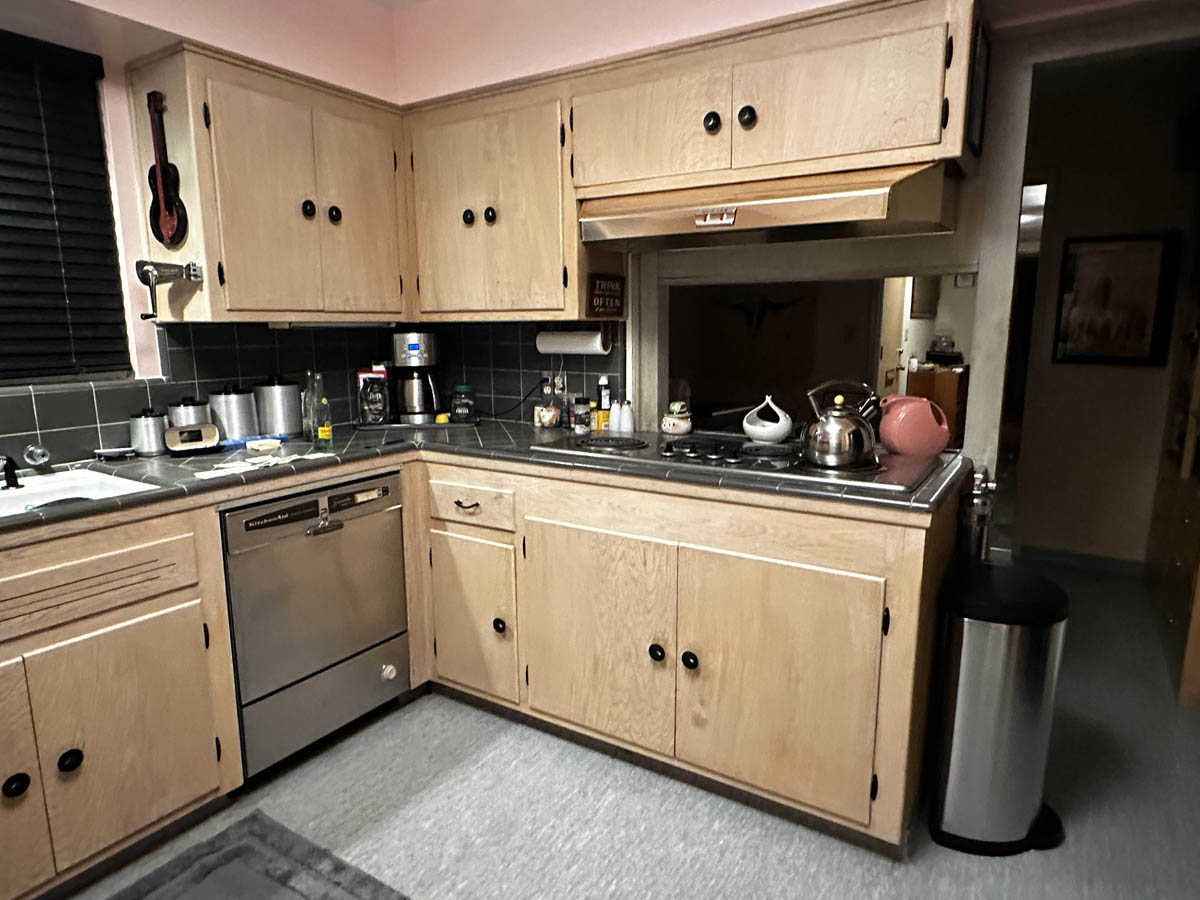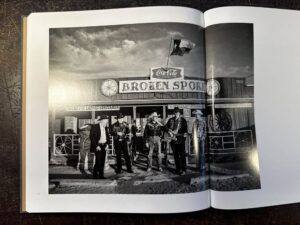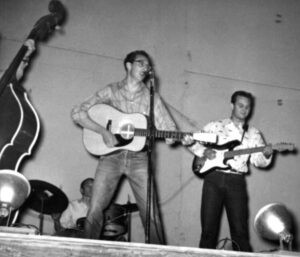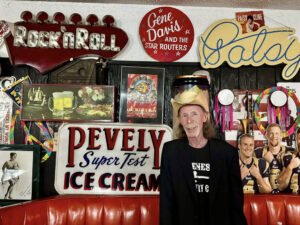I finally finished a cabinet restoration project I started about a month ago. My 1957 house has all original kitchen and bathrooms. It’s always been a struggle to keep things original but looking nice, especially in the kitchen, because everything gets used—a lot!
These cabinets were done in a style (thanks to my old pal Johnny Dilks for finally solving this mystery for me) popular in the 1950s called “pickling.” I always thought they were bleached, because they have a bleached wood appearance. But, as I found out, it was done with a very old and forgotten process known as pickling. Basically, they would shoot a white Fullerplast translucent paint on the wood, then put a very thin coat of yellowed lacquer on the top. (Very similar to how the early Fender Telecasters were finished!!). The Fullerplast layer gives it that blonde, translucent look with the grain showing through. I dig it.
The cabinets were looking dingy and the original knobs and handles (which I’d already stripped and repainted once, ten years ago) had paint flaking off and everything just looked kind of sad. Just think about how much your typical kitchen cabinets and drawers get used. These were original, from 1957, and I’ve used the heck out of them just in the eighteen years I’ve been in this house.
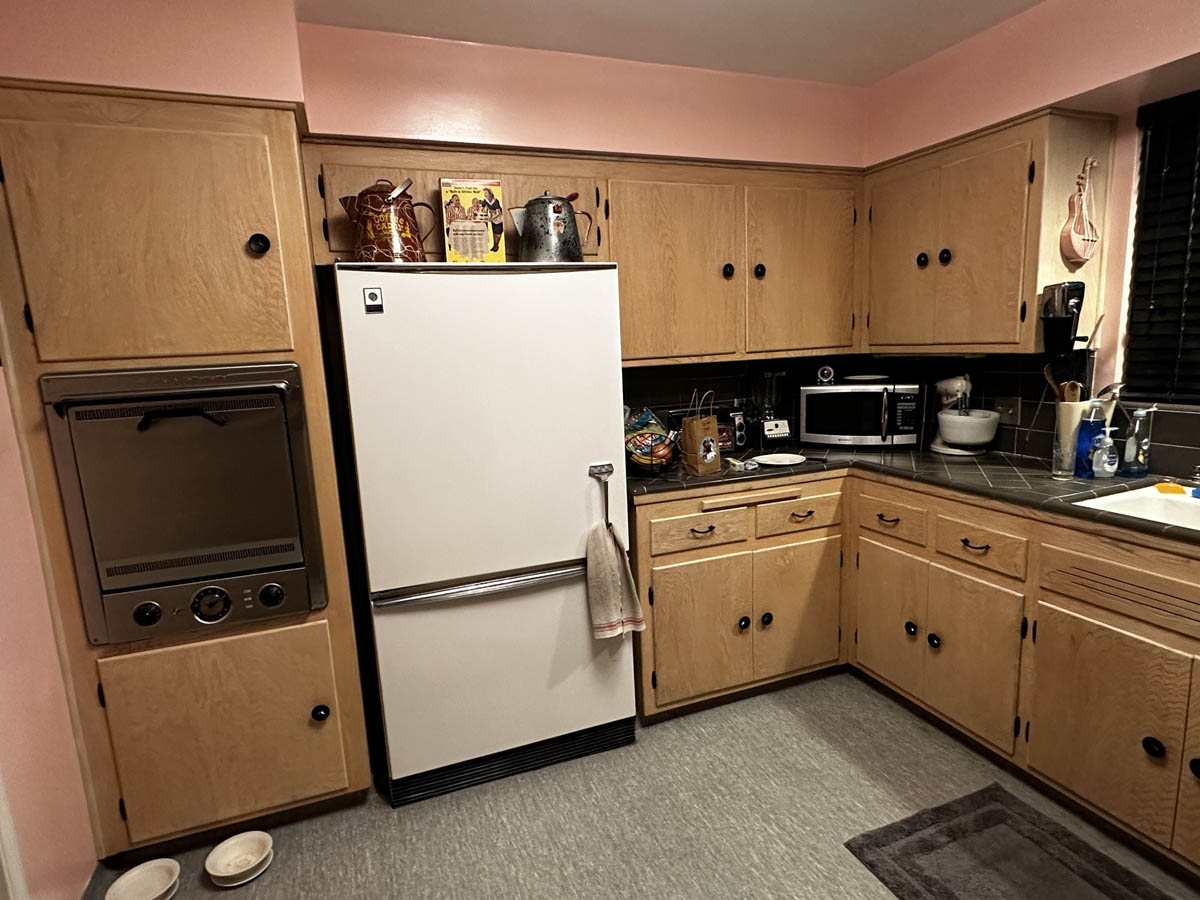
The best thing I discovered was a place online with NEW OLD STOCK knobs and handles exactly like the original ones. So I didn’t have to go through the hassle of stripping and refinishing the knobs. The gold metal chevron in the middle of the black baked-enamel knobs has always been one of my favorite things about this kitchen, so I was really ecstatic to find enough brand-new original ones from the 1950s to redo the whole kitchen (the same knobs are used in the hallway cabinets and the back porch). The price of the new ones wasn’t bad, either—seven bucks apiece—and way easier than dealing with paint stripper and Japan drier and all that stuff. I’m convinced this baked enamel finish on these NOS knobs and handles will outlive me. Way, way better quality than the cheap Chinese crap you buy at Home Depot today.
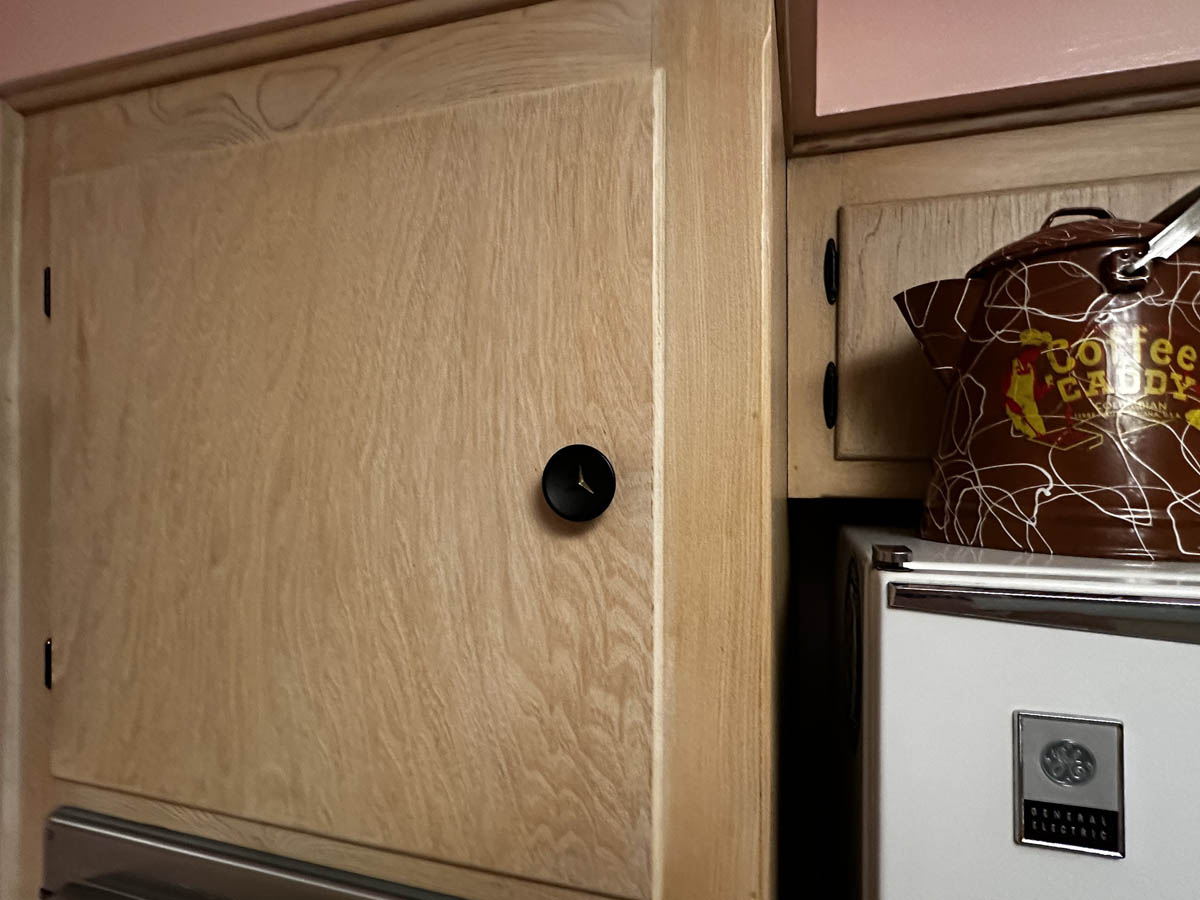
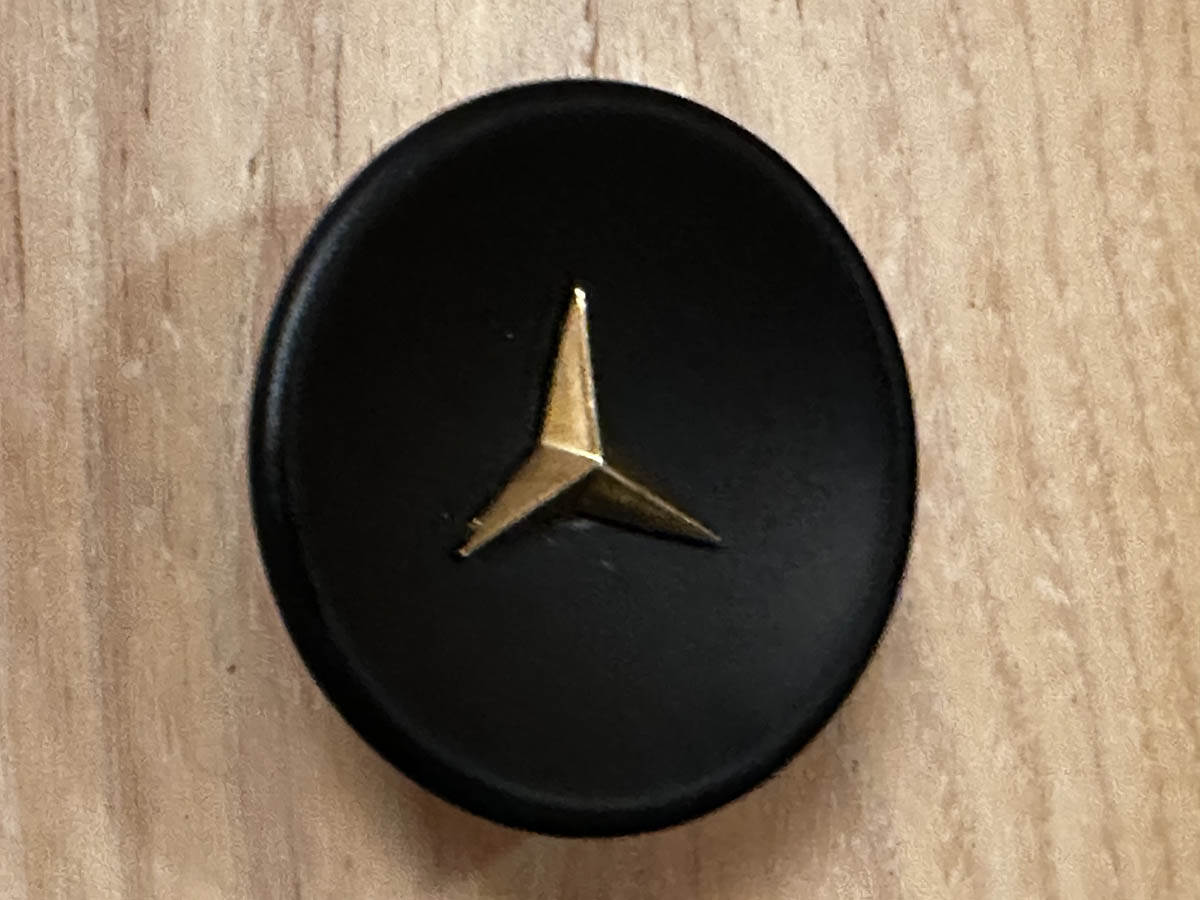
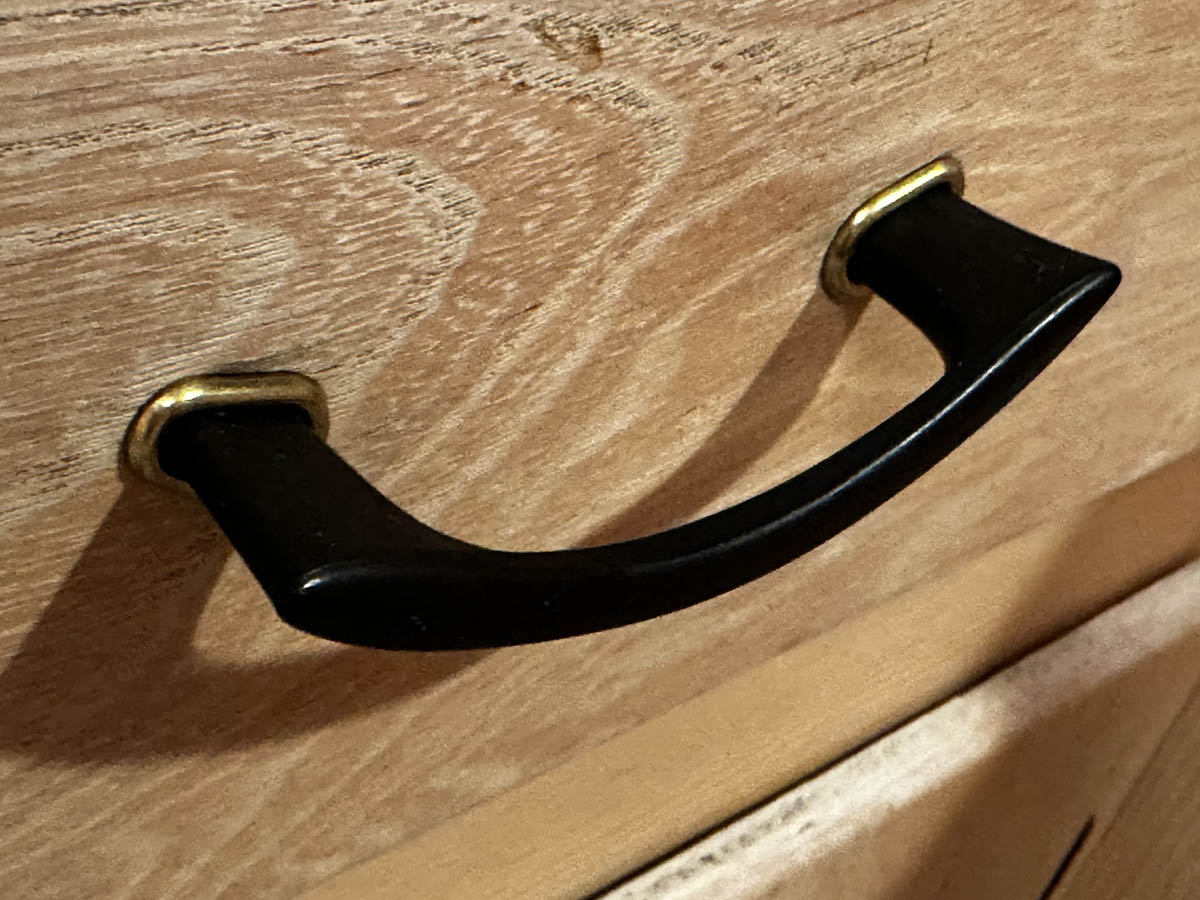
Cleaning the cabinets was another matter. I consulted with Johnny Dilks (he has a furniture refinishing and restoration business in New Orleans), and he confirmed my worst fear: the “pickling” process is pretty much a lost art, and worse yet, any attempt at paint matching to cover up worn spots would result in a really mismatched look as it aged. He agreed with me that the best thing to do was just to clean these up as much as possible and see if I could live with it.
I discovered a really good cleaning mixture: 2 cups hydrogen peroxide, 1 cup Dawn liquid, and 1 cup baking soda, dissolved in a gallon of warm water. It’s like supercharged Dawn liquid. It really works on anything that’s greasy or gummy or funky or dirty. If you use it at home, just make sure you follow it up with a clear water rinse and dry off the wood immediately. If you leave the cleaning mixture on without rinsing it properly, you might discolor the wood from the hydrogen peroxide.
I’ve been slowly working on really deep cleaning these cabinets the last couple of weeks, and have been shocked at the results. The dinginess and discoloration was mostly just dirt, grease, and finger funk. There’s a little bit of wear, but for sixty-seven-year-old cabinets, they cleaned up real nice and look pretty darn great to me. Now to keep them going for a few more decades…
